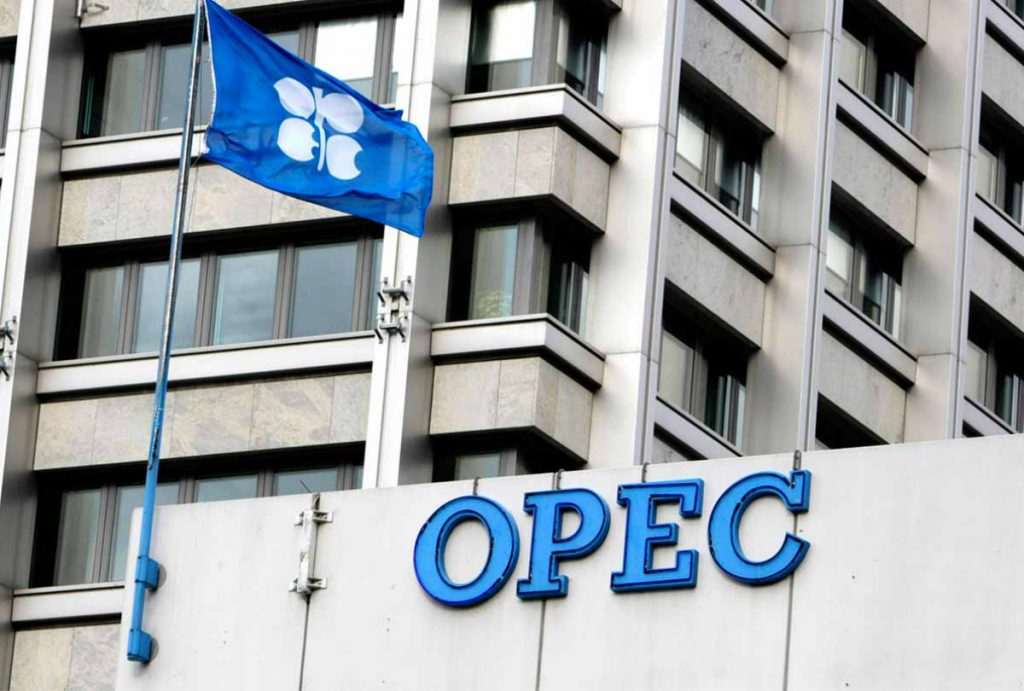By Liz Hampton

(Reuters) – Hello Power Up readers! Oil futures are down more than 1% today after the Organization of the Petroleum Exporting Countries and allies decided to speed up oil output hikes. This comes after Brent shed more than 8% last week, and U.S. West Texas Intermediate (WTI) fell by 7.5% over the week, as Saudi Arabia signaled it could manage a prolonged lower price environment. Brent crude futures were trading at $59.88 a barrel on Monday, and WTI was trading around $56.82 a barrel. U.S. Henry Hub natural gas futures were at $3.662 per million British thermal units.
OPEC+ agrees to speed up output hike
And Big Oil shows which companies are ready for a downturn
OPEC+ will accelerate oil output hikes and could bring back as much as 2.2 million barrels per day by November, Reuters exclusively reported last week. This comes as its leader, Saudi Arabia, is seeking to punish some members for producing above quotas. The group already shocked the market in April when it agreed to a larger-than-expected output increase for May, even as prices have fallen and demand has slowed. The increase is intended to punish Iraq and Kazakhstan for poor compliance.29dk2902l
Oil prices last week recorded their largest weekly loss in a month ahead of the OPEC+ meeting over the weekend and after Saudi Arabia said it could withstand a period of lower oil prices. In mid-2014, OPEC let oil prices fall as it sought to regain market share, sending dozens of small and high-cost U.S. producers into bankruptcy. There are fewer such companies in existence today, and publicly traded shale companies are in a stronger financial footing than they were a decade ago, after turning their focus to capital discipline and boosting shareholder returns. Still, some producers will struggle to turn a profit if oil prices remain under $65 a barrel. Meanwhile, U.S. President Donald Trump is set to visit Saudi Arabia to discuss an arms package and nuclear agreement. He has wanted OPEC+ to pump more oil and help keep energy prices low. OPEC+, which includes allies like Russia, had been cutting around 5 million bpd of production, or 5% of global demand.
In other news, Big Oil earnings on Friday offered some insight into which companies are best poised to weather the downturn in prices. Exxon Mobil and Shell maintained the pace of their share buybacks, while rivals Chevron and BP said they would reduce repurchases in the second quarter. Exxon has benefited from growing production in its Guyana oilfield. Chevron’s production was flat, as growing output in Kazakhstan and the Permian was offset by a loss of production from asset sales.
Trying to keep up with the latest tariff news? Our new daily news digest offers a rundown of the top headlines on global trade. Sign up for Tariff Watch here.
ESSENTIAL READING
U.S. drillers cut the number of rigs operating for the first time in three weeks last week, oilfield services firm Baker Hughes reported on Friday. The total rig count fell by three to 584. The number of oil rigs operating fell by four, while gas rigs rose by two.
The Trump administration is proposing cutting billions of dollars in federal funding next year for projects that include renewable energy and electric vehicles and slashing programs intended to combat climate change. The proposals are part of a $163 billion requested cut to the federal spending.
The U.S. Army Corps of Engineers on Friday said it would make a decision this autumn on a permit for Enbridge’s proposed Great Lakes tunnel for its Line 5 oil project. The project received an emergency designation after Trump declared a national energy emergency, giving the Army Corps the ability to fast track a review of the project.
Sunoco on Monday said it would buy Canadian company Parkland in a deal valued at $9.1 billion. The move will create the largest independent fuel distributor in North America.
Shell is working with advisers to evaluate a potential acquisition of rival BP, Bloomberg reported on Saturday, citing people familiar with the matter. Shell has been more seriously looking at the feasibility of a takeover in recent weeks, but a final decision will likely depend on whether BP’s stock continues to fall. Last week, Shell CEO Wael Sawan said he would rather buy more Shell stock.
We hope you’re enjoying the Power Up newsletter. We’d love to hear your thoughts and feedback. You can reach us at: [email protected].
Editing by Marguerita Choy
Share This:




 CDN NEWS |
CDN NEWS |  US NEWS
US NEWS 































